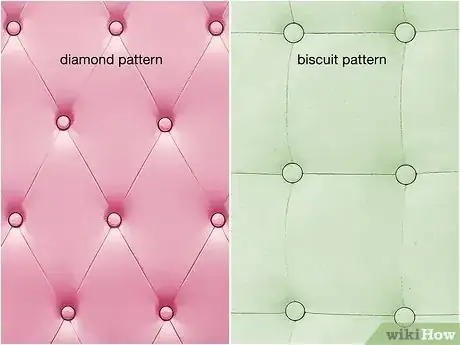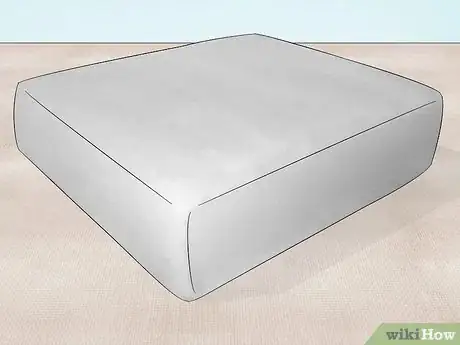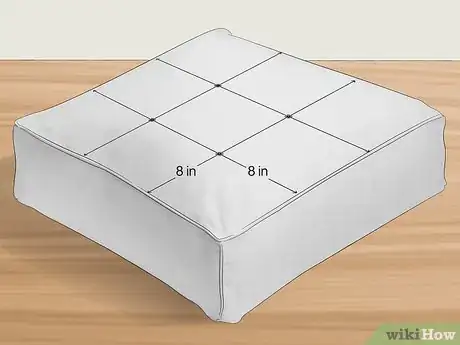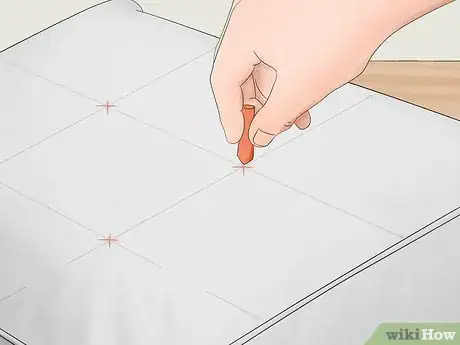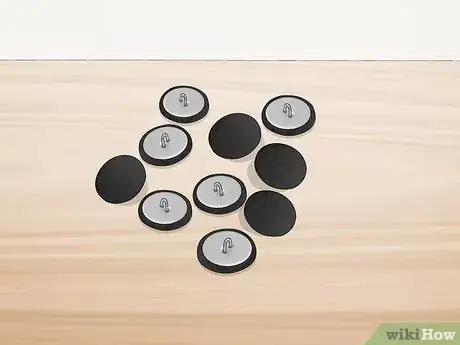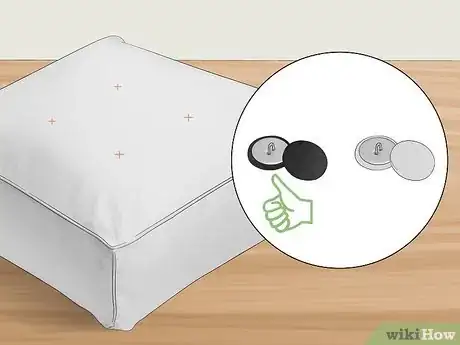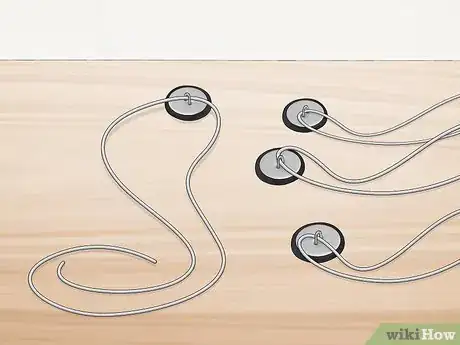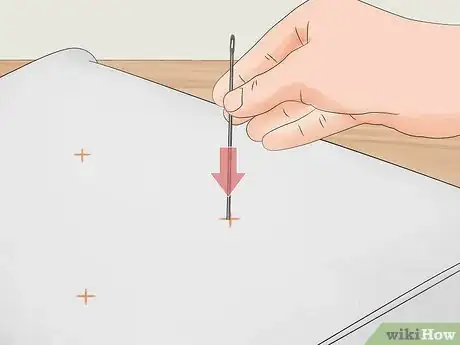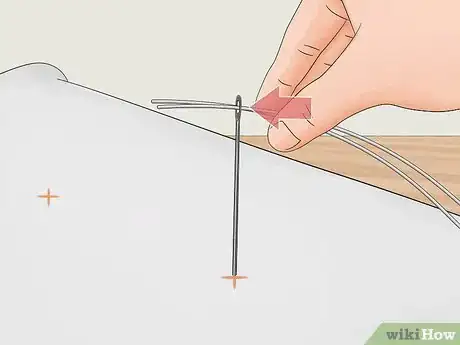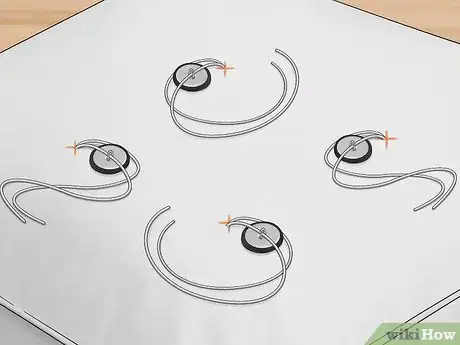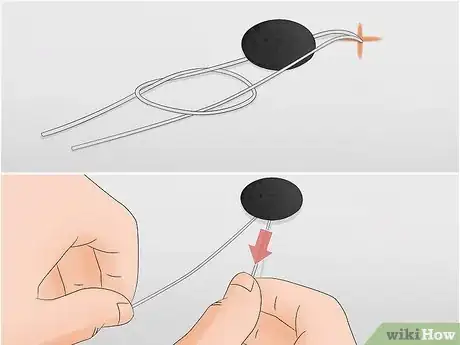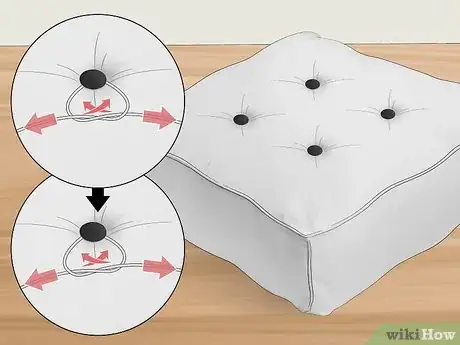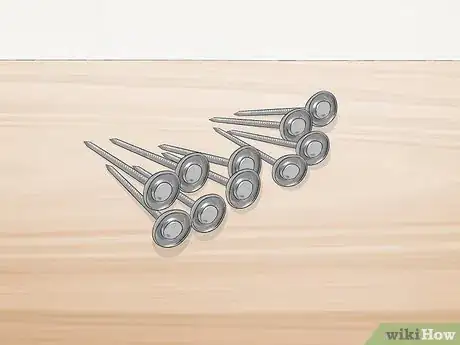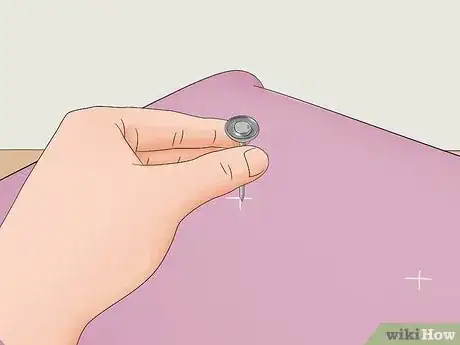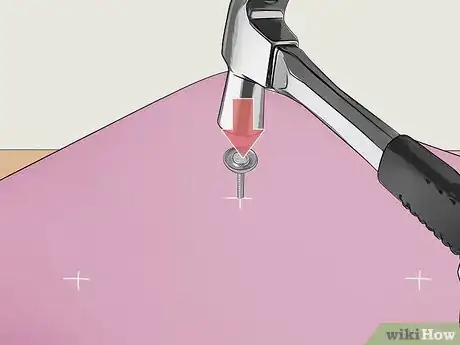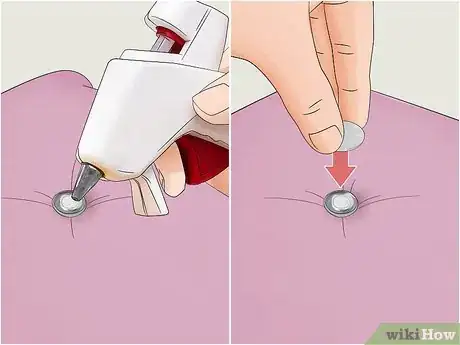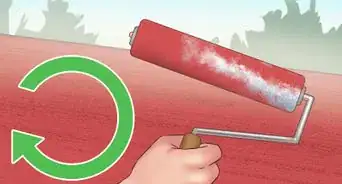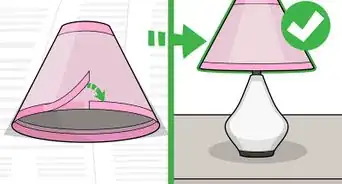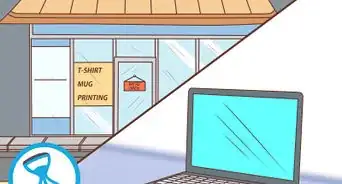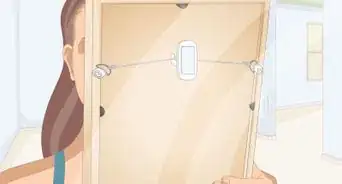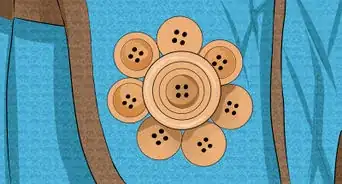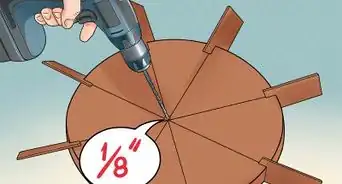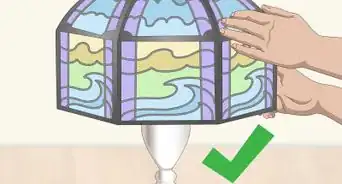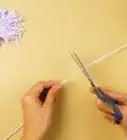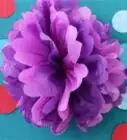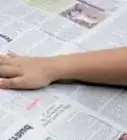This article was co-authored by wikiHow Staff. Our trained team of editors and researchers validate articles for accuracy and comprehensiveness. wikiHow's Content Management Team carefully monitors the work from our editorial staff to ensure that each article is backed by trusted research and meets our high quality standards.
There are 14 references cited in this article, which can be found at the bottom of the page.
This article has been viewed 14,794 times.
Learn more...
Tufting is when you make indentations in your fabric using a tufting needle, screws, or nails before covering them with buttons. Adding tufts to your fabric piece is a great way to add style and a classic finishing touch easily. All you'll need to add the tufts are a few materials such as buttons, tufting twine, or washers. With just a little bit of time, you'll have beautiful tufts in your fabric piece.
Steps
Designing Your Project
-
1Choose your tufting pattern for your project. The 2 main tufting patterns are diamond and biscuit. A diamond pattern is when the tufts are in the shape of a diamond, while a biscuit pattern has tufts in a square form. Decide which pattern would look best on your specific project, whether it's a bench, headboard, or pillow.[1]
- For example, you might design a headboard to be in a diamond pattern or a bench that has a biscuit pattern on it.
-
2Add padding to your project so the tufts will work correctly. Choose something like foam to create thickness and add a layer of batting over your project under the fabric for extra protection. Position the padding on top of your project and cut it if necessary so that it's the exact same size. Lay batting over the padding with enough left over to wrap around the edges of the project.[2]
- Give your project a thick layer of padding so that the tufts can actually be created. For example, 4 in (10 cm) of foam will create deeper tufts than 2 in (5.1 cm) will.
- Batting, which is soft insulation for your project, is useful if you're covering a hard surface like plywood so the wood doesn't go through the fabric.
Advertisement -
3Decide the spacing and row count of the tufts. Choose whether you'd like the tufts spread out or close together, as well as how many rows your project will have. For example, you might decide on tufts in a biscuit pattern that are 6 in (15 cm) apart.[3]
- Consider planning this out on paper so you can easily erase pencil marks if you make a mistake or rearrange the tufts.
-
4Mark where you’d like the buttons on your fabric using chalk. Use a measuring tape to space out the tufts evenly on your project and mark the spots with a piece of white chalk or a white pencil. If you’re putting buttons on both sides of your fabric piece, mark both sides with the chalk.[4]
- If you’re putting buttons on both sides of your fabric, it’s important that they’re spaced out the same way on both sides for perfect tufts.
-
5Purchase enough buttons and other supplies to cover your project. Once you've figured out how many tufts you'll have, buy enough supplies to create each tuft from a local hardware store. For instance, if you've measured out 10 tufts, you might buy 10 buttons, 10 washers, and 10 nails.
- It's a good idea to buy extra supplies just in case you mess up or need an extra one.
-
6Opt for buttons of a different color to make your project stand out. While most tufting projects have buttons that are covered in the same fabric that was used to make the tufts for a cohesive look, you might choose to pick a different fabric or design. Pick out bejeweled buttons or buttons in a contrasting color to make them stand out against the tufts.
- For example, you might cover a headboard in bright pink fabric and then use buttons that look like diamonds for a sparkly look.
Using a Needle and Buttons
-
1Put tufting twine through each button that you’re using. Cut a piece of tufting twine that’s at least twice as long as the height of the fabric piece you’re going to pull it through. Thread the piece of twine through the loop on the back of your button, and do the same thing for the rest of the buttons you’re using.[5]
- Purchase a button kit to quickly and easily cover your buttons, if you’d like.
- Tufting twine is strong enough to be pulled through the fabric and can be found at a local craft or home improvement store.
- This is a perfect way to add tufts to things like pillows where you can tuft both sides.
-
2Push a button tufting needle all the way through your fabric. Use a button tufting needle that’s long enough to go through your fabric item with room to spare. Place the tip of the needle on one of the marked spots and push the needle all the way through to the other side. If you marked the other side of your fabric, try to get the needle tip to come through the marked spot on this other side too.[6]
- For example, a 10 in (25 cm) tufting needle will likely work for most projects.
-
3Thread the ends of the twine through the tufting needle in the same direction. Take the piece of twine that has a button attached to it and bring the two ends together so they’re both pointed in the same direction. Loop the two ends through the eye of the tufting needle and pull the twine through.[7]
-
4Pull the needle through the fabric so that the button is in place. Push the needle all the way through the fabric and pull it out from the other side. This will bring the twine through the fabric so the two loose ends are on the other side while the button stays in place on top of the fabric.[8]
- Be careful as you pull the needle through so that you don’t poke yourself.
-
5Add the buttons to the other side of the fabric, if you'd like. Thread another button through one end of the twine that you just pulled through the fabric. It helps to pull the twine so that one end is longer than the other so you can easily add the button.[9]
-
6Tie a slip knot and pull it tightly to form the tufts. Once your second button is centered on the marked spot, form a slip knot around the button. Pull the shorter end of the knot to tighten the twine. The more you tighten the twine and button, the deeper your tufts will be.[10]
- Create a slip knot by forming a large loop with the twine using your fingers and grabbing the twine through the loop before pulling it tightly.
- Once you do this with the rest of your buttons, it’ll be easy to make sure they’re all evenly tightened with the slip knot.
-
7Form a square knot once it’s tight and cut the twine. To tie a square knot, put the left piece of twine over the right and tie a knot, then put the right piece over the left piece and tie it again. This will keep the button in place and the tufts tight. Use scissors to carefully cut the twine under the button so the ends aren’t visible.[11]
- Do this with the rest of the buttons once they’re all attached.
Tufting with Nails or Screws
-
1Choose between screws and nails to form your tufts. Use screws for super secure tufts or opt for nails to keep the fabric from bunching up. Each nail or screw that you use will need a washer to be placed in, so check that you have enough washers, nails, or screws to create each tuft.[12]
- Only use nails or screws to form tufts if your project is one-sided and has a stable base that they can attach to.
- Make sure the washers, screws, and nails are small enough to fit under your button so they’re not visible.
- You might use screws for a super quick and easy tufting job.
-
2Place a nail or screw inside a washer and hold it on a marked spot. Depending on which one you chose, situate a nail inside a washer or a screw inside a washer. Place it on a marked area where the tuft will go, holding it with just one hand so you can use the other to drive it into the fabric.[13]
-
3Use a drill or hammer to push the screw or nail into the fabric. Hammer the nail or drill the screw in slowly, making sure to hold the nail or screw super straight. Keep pushing the nail or screw into the fabric until it’s nice and tight, according to your tuft preferences.[14]
- If you’re using a hammer, be careful that you don’t hit your fingers when you’re holding the nail in place.
-
4Cover the back of a button with a strong glue and adhere it to the tuft. Use hot glue or another type of strong adhesive glue and put a large dot of it on the back of the button. Place the button on top of the nail or screw so that it’s covering it completely and press down firmly. Do this with the rest of your button tufts, and your project is done![15]
- If your button has a loop on the back for thread, remove this with pliers before adding the glue.
- Avoid adding so much glue that it seeps out from under the button when it’s pressed down.
- Hold the button in place for a few seconds so it has time to dry.
Things You'll Need
Designing Your Project
- Padding
- Batting
- Scissors
- Measuring tape
- White chalk
- Buttons
- Washers
- Nails or screws
Using a Needle
- Tufting twine
- Scissors
- Buttons
Tufting with Nails or Screws
- Washers
- Nails or screws
- Drill (optional)
- Hammer (optional)
- White chalk
- Adhesive glue
- Buttons
- Pliers (optional)
References
- ↑ https://www.charlotteobserver.com/living/home-garden/article9131216.html
- ↑ https://www.youtube.com/watch?v=l-u0xLteizc#t=5m45s
- ↑ https://www.charlotteobserver.com/living/home-garden/article9131216.html
- ↑ https://www.youtube.com/watch?v=bXBObylr6LM#t=35s
- ↑ https://www.youtube.com/watch?v=bXBObylr6LM#t=1m24s
- ↑ https://www.youtube.com/watch?v=sVhg8mkn0aQ#t=25s
- ↑ https://www.youtube.com/watch?v=sVhg8mkn0aQ#t=45s
- ↑ https://www.youtube.com/watch?v=bXBObylr6LM#t=2m48s
- ↑ https://www.youtube.com/watch?v=bXBObylr6LM#t=4m2s
- ↑ https://www.youtube.com/watch?v=bXBObylr6LM#t=4m22s
- ↑ https://www.youtube.com/watch?v=sVhg8mkn0aQ#t=1m58s
- ↑ https://www.youtube.com/watch?v=lsk_MJZXMC0#t=6m9s
- ↑ https://www.youtube.com/watch?v=l-u0xLteizc#t=9m20s
- ↑ https://www.youtube.com/watch?v=l-u0xLteizc#t=9m30s
- ↑ https://www.youtube.com/watch?v=lsk_MJZXMC0#t=9m25s
